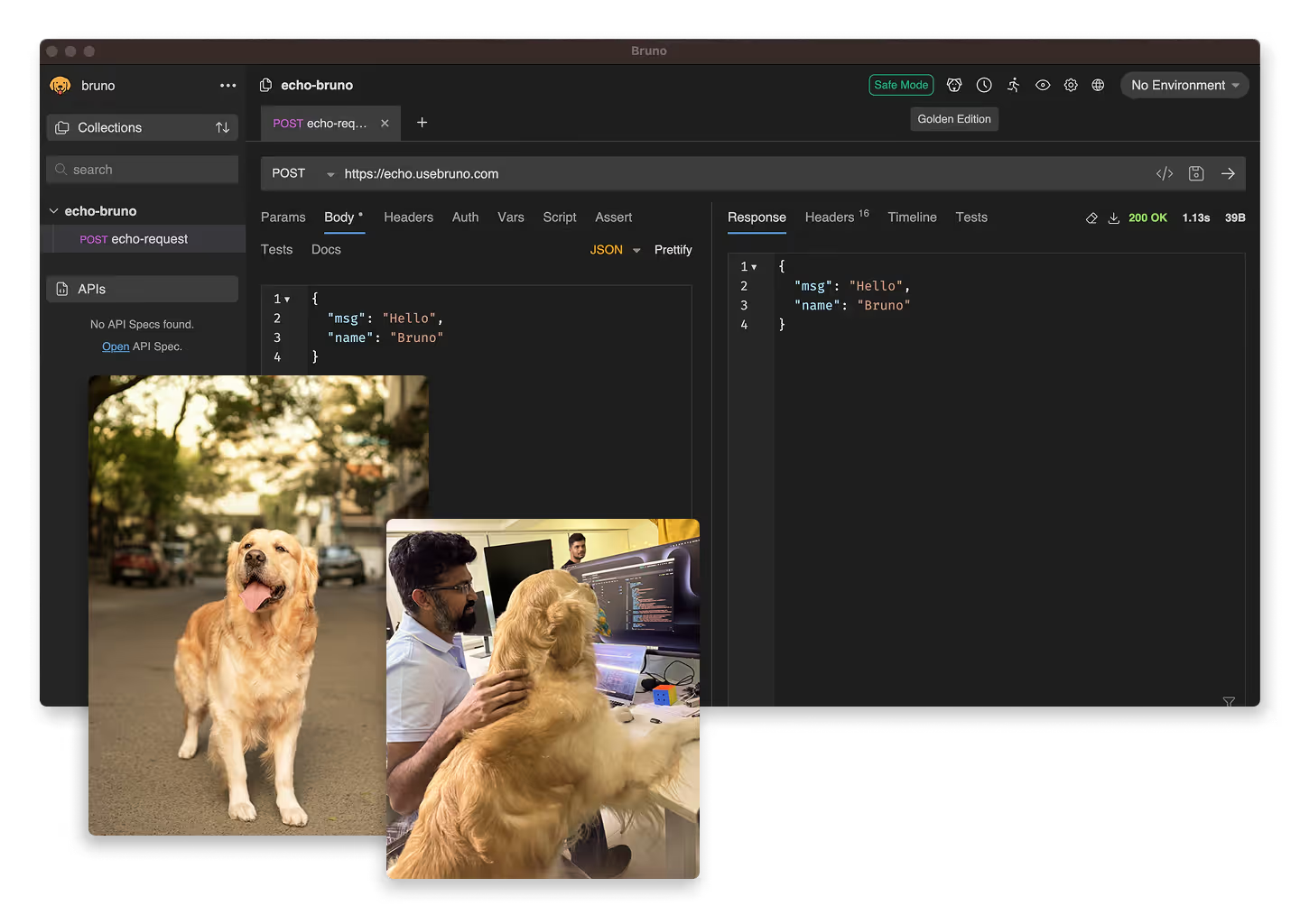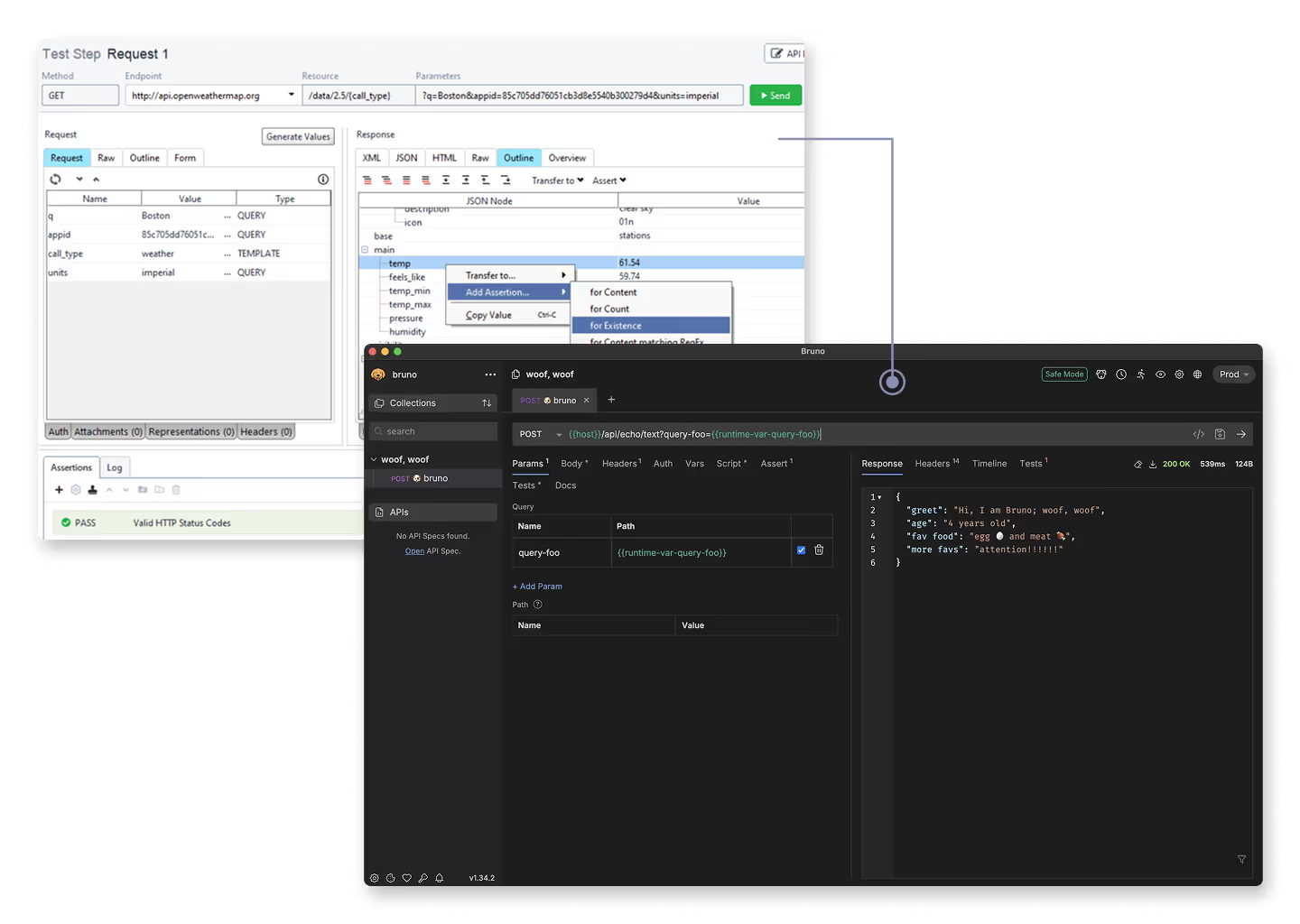Bruno is transforming API development with its minimalist, Git-integrated approach. Unlike feature-heavy competitors, it stores API requests and tests in plain text files, enabling seamless version control and collaboration. Its local-first, open-source nature addresses security concerns while reducing costs and complexity.
Bruno: The Lean, Git-Friendly API Client We Needed
When a single API failure can bring down an entire digital ecosystem, the stakes for developers are high. Yet teams across the globe still struggle with clunky, outdated tools for API development and testing—costing precious time and risking costly errors. As a digital product studio, In The Pocket has witnessed firsthand how the right development tools can significantly impact project timelines, team collaboration, and ultimately, business success. Recently we started exploring Bruno, a new API client transforming how developers build, test and maintain the critical connections powering modern software.
What makes Bruno relevant for businesses?
Beyond its technical merits, Bruno addresses key business challenges that many organisations face today: reducing operational costs, improving team productivity, and maintaining robust security compliance. As software development becomes increasingly crucial to business success, tools that can streamline workflows while reducing overhead are invaluable.
What makes Bruno special?
Bruno is an open-source API client that's been gaining traction for all the right reasons. Unlike traditional API clients, Bruno takes a refreshingly minimalist approach while maintaining the features product teams actually need.
The true cost of feature bloat
Feature-rich applications like Postman, which are much more than a simple API client, of course come with a price – and not just the monetary one. While these tools offer extensive capabilities from API design to monitoring and collaboration, many teams find themselves using only a fraction of these features while bearing the full weight of their complexity such as resource overhead and cognitive load.
Git-friendly by design
One of Bruno's standout features is its use of plain text files to store API requests and tests. This allows:
- Using the same version control systems developers are already familiar with
- Easy collaboration through existing git workflows
- Simple diff reviews
This a sample diff for ReadyAPI's XML format:
Compared to Bruno's .bru format:
Having your APIs and also API tests alongside your application code in git makes so much sense that I wonder why we accepted otherwise for so long.
The plain text files also allow for easy updates and additions to your API files in your favourite code editor like VS Code without having to use a different and sometimes slow GUI.
And as an added benefit, the plain text format is very compatible with genAI solutions to add assertions for instance.
Data security
Even though GDPR does not mandate where data is stored, many European clients are now rightly wary of storing sensitive data outside of Europe. API calls themselves are sensitive data assets as they can reveal your application's internal architecture and proprietary business rules. From a security standpoint, example error responses can expose system vulnerabilities and headers might reveal sensitive internal system information. Having your API calls and tests stored in an already approved git solution where your code also resides is a no-brainer.
Developer-centric features
Despite its lean approach, Bruno doesn't compromise on essential features:
- Environment variables support
- Script-based request pre- and post-processing
- Response validation
- Collection organisation
- Built-in authentication handling
- Importing node modules like faker.js to produce better mock data
- Easy CLI to run tests on the CI
Oh, did we already mention that the open source version is free and covers most of our needs?
The mission we love
What really sets Bruno apart is its mission: to streamline API development while reducing operational costs and complexity. By eliminating subscription fees and cloud dependencies, Bruno offers immediate cost savings compared to traditional enterprise API tools.
The tool's integration with existing version control systems means organisations can leverage their current infrastructure investments without additional overhead. This approach not only reduces training costs but also enhances security compliance by keeping sensitive API documentation within your organisation's existing secure infrastructure. For businesses operating in regulated industries or handling sensitive data, this architectural choice provides significant compliance and risk management advantages.
The fact that they have a Chief Happiness Officer is an added bonus, what's not to love about Anoop's dog, who's called Bruno of course!

Migrating a legacy API test suite within a government setting
While we believe in empowering our product teams to choose their own tools, some level of alignment across the organisation helps maintain efficiency and reduce cognitive overhead. In our tech stack governance, we use a public Technology Radar that categorises tools into different statuses. Bruno has recently moved from "Assess" to "In Trial" after several teams reported positive experiences with it.
The transition has been smooth for most teams, particularly because Bruno's plain-text approach makes it easy to migrate existing collections and documentation.
For a large government organisation, we recently completed a significant migration from ReadyAPI to Bruno, leveraging generative AI to accelerate the process. While traditional software procurement in government organisations often involves lengthy purchasing procedures and complex security assessments, Bruno's open-source and local-only nature significantly reduced many of these hurdles. The project delivered cost savings - eliminating expensive enterprise licensing fees while reducing procurement overhead. No cloud dependencies eliminated data sovereignty issues and the local-first approach aligned with strict government data policies.
We used generative AI to analyse and convert hundreds of ReadyAPI test cases:
- Custom scripts transformed complex test scenarios into Bruno's .bru format
- The plain text nature of Bruno files made AI-assisted conversion highly effective
Part of the Python script created by GenAI:
Classic ReadyAPI interface which involves lots of clicking, while Bruno graphical user interface is quite minimal:

The transition was well-received by the team:
- Developers appreciated the simpler, more focused interface
- Git-based workflow integrated perfectly with existing development practices
- Reduced cognitive load improved team productivity
- Training requirements were minimal due to Bruno's intuitive design
Looking forward
In our shift-left approach, Bruno has transformed API testing from a specialised task into a shared responsibility that starts early in development. While the tool is still evolving and its open-source community is young, its focused design has already delivered measurable improvements in API quality and team collaboration. In a landscape often dominated by over-engineered solutions, Bruno's lean philosophy and user-centric approach make it a compelling choice for organisations looking to streamline their API development workflow. As active contributors to its open-source community, we're confident in recommending Bruno as a tool that delivers exactly what modern development teams need - no more, no less.
Disclaimer: This is not a paid promotion, we're just fans ;)
Stay ahead
of the game.
Sign up for our monthly newsletter and stay updated on trends, events and inspiring cases.
.avif)




.png)
.avif)